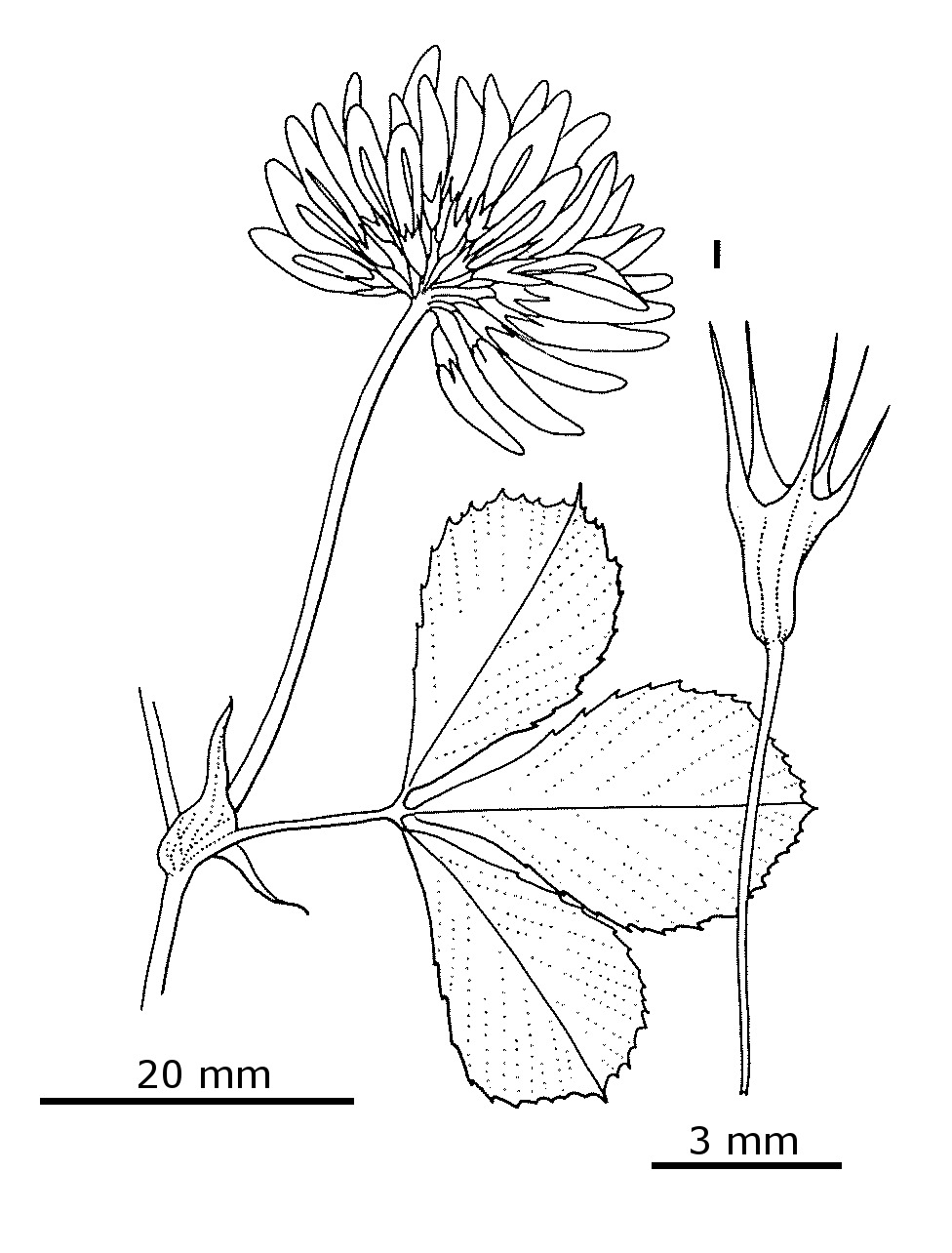Trifolium hybridum var. hybridum
Alsike CloverErect or ascending perennial herb; stems 10–70 cm long, often much-branched at base, glabrous or glabrescent. Leaves palmately trifoliolate, long-petiolate; leaflets obovate, rarely rhombic, 10–40 mm long, 10–30 mm wide, glabrous, entire or minutely serrate, emarginate or obcordate; stipules adnate to petioles for one-third of their length. Inflorescence mostly 10–20-flowered, axillary, globular, c. 25 mm long, 10–25 mm wide, pedunculate; flowers pedicellate. Calyx to 5 mm long, tube campanulate, with 5 prominent and 5 inconspicuous veins, throat open, teeth 1–2 times as long as tube, unequal, more or less spine-tipped; corolla 7–11 mm long, pink or white, persistent; standard ovate-oblong, slightly dentate above. Pod obloid, 3–4 mm long, stipitate, slightly exserted from calyx tube; seeds 2–4, ovoid, c. 1.5 mm long, reddish. Flowers Oct.–Jan.
Wim, VVP, VRiv, NIS, HNF. Also naturalised WA. Native to Europe, and western Asia.
Important fodder crop that has become established at a number of places in Victoria.
Zohary & Heller (1984) recognize 3 varieties based mainly on differences in stem characteristics; only the type variety has been recorded for Victoria.
Plants from near Longerenong are somewhat intermediate between this species and T. michelianum var. michelianum in that they appear to be annuals or short-lived perennials, have a short calyx with teeth only about twice as long as the tube and obloid pods with up to 4 seeds.
Jeanes, J.A. (1996). Fabaceae. In: Walsh, N.G.; Entwisle, T.J., Flora of Victoria Vol. 3, Dicotyledons Winteraceae to Myrtaceae, pp. 663–829. Inkata Press, Melbourne.
 Spinning
SpinningZohary M.; Heller, D. (1984). The genus Trifolium. Israel Academy of Sciences and Humanities, Jerusalem.
